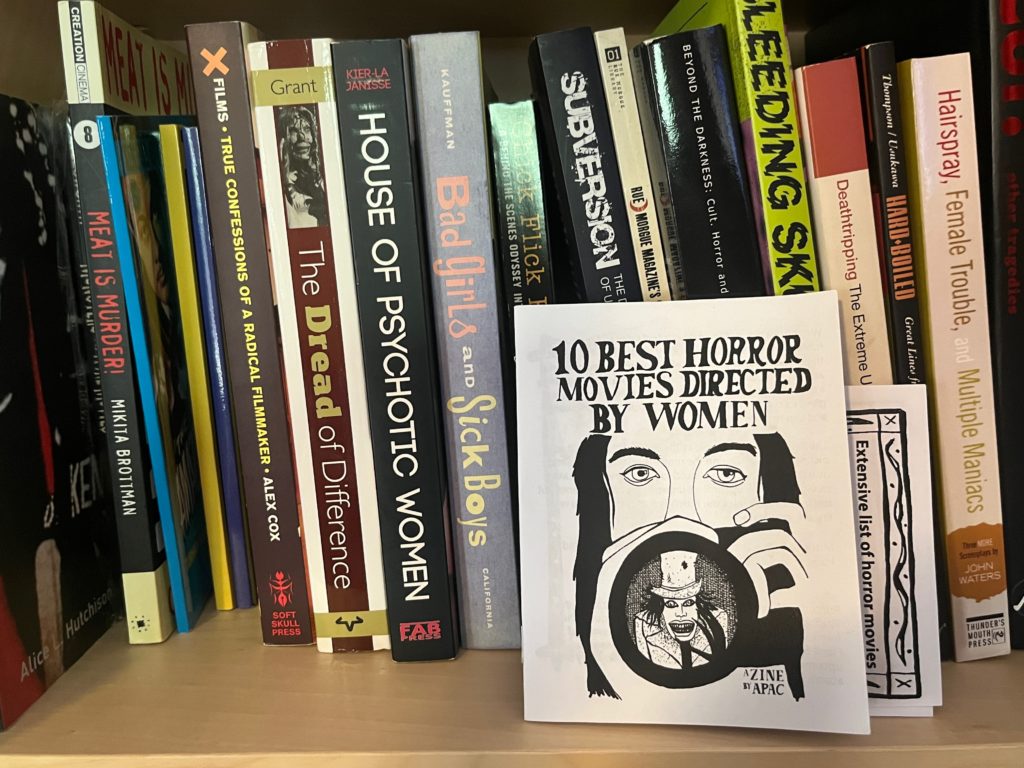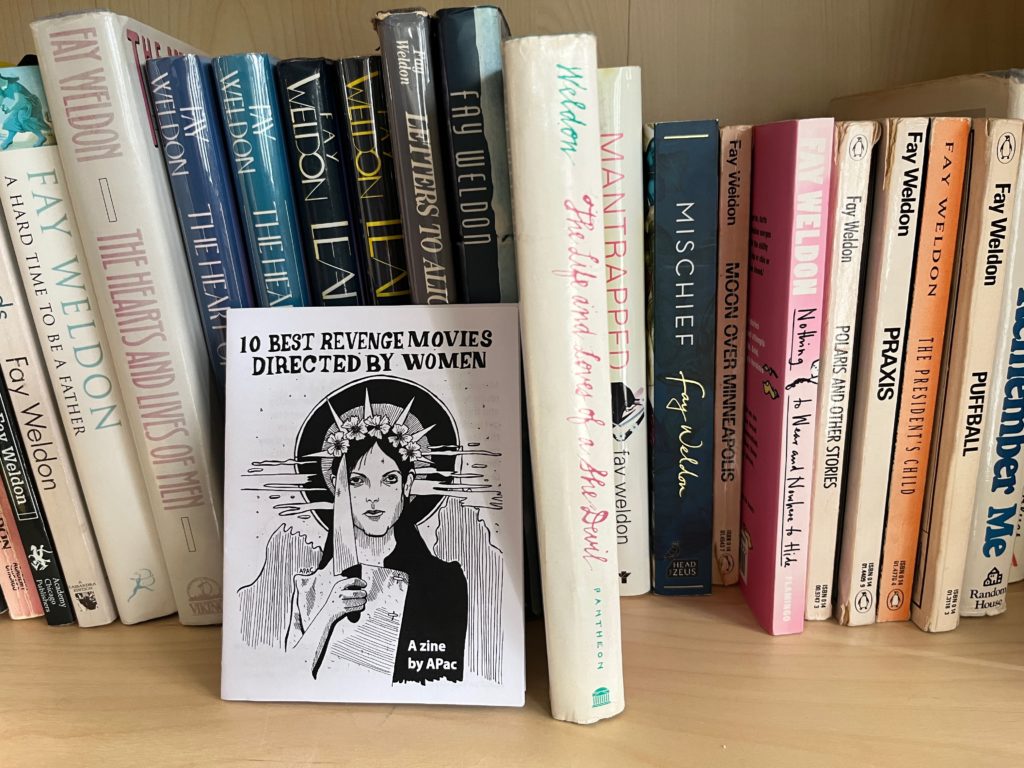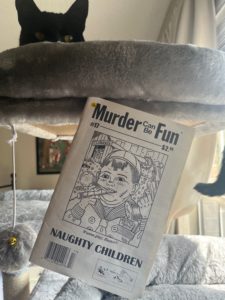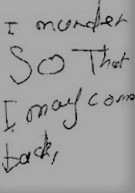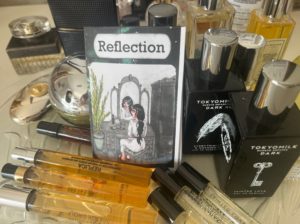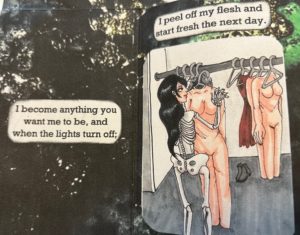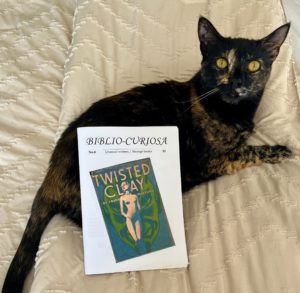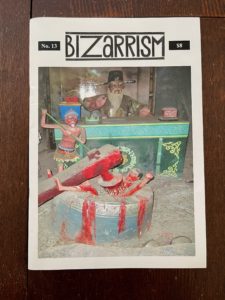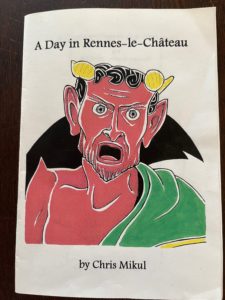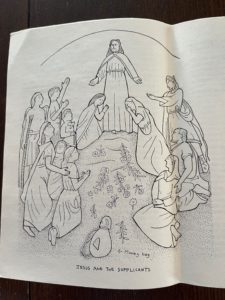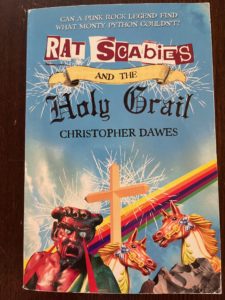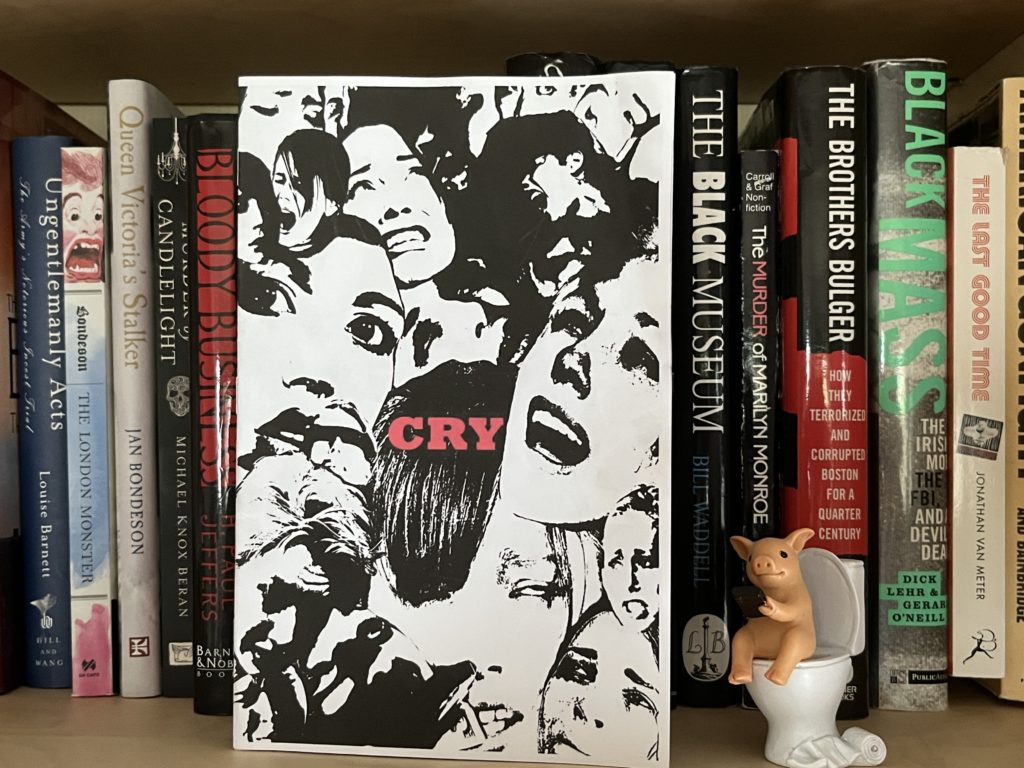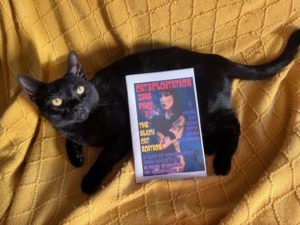
Told you I would revisit Catsploitation if I could. After discussing the first Catsploitation during ‘Zine September, I was eager to get my hands on more of these ‘zines for Oddtober but was worried I wouldn’t get them in time. Bast smiled upon me, and here it is, a look at Catsploitation Zine Part 3: The Black Cat Edition. Catsploitation Zine as a whole discusses fans of cinematic horror and their cats. This edition features fan reviews of horror films that feature black cats from 1934 to 1998, fan art and stories of the black cats owned by people who participated in the ‘zine in some manner. One of them is ‘zine creator Matthew Ragsdale’s memorial to one of his beloved cats, Mady.
‘Zines like this are difficult to discuss in depth because it more or less does what it says it is going to do. There are thirteen short film discussions with film-specific illustrations from fan submissions, and all of the reviews are helpful but succinct. Ragsdale found an interesting and diverse list of films to review for this ‘zine. I haven’t seen most of the films on his list, even though I am culturally aware of most them. This ‘zine will serve as a lovely playbill should I ever want to have a butt-numb-athon and spend a couple of days watching movies back to back.
I don’t want to spoil all of the films discussed, but I will mention a couple of them just to give an idea of the contents. Here’s a snippet from a discussion of The Black Cat (1934), which I am kind of ashamed to admit I have never seen:
Necrophilia, Satanism, drugs, a chess game of doom, torture, a black mass with human sacrifice, and a man being skinned the fuck alive. 1934’s pre-code The Black Cat is like a giant terror scenario onion that gets peeled back… sending us into a nightmare carnival of shadows with two mortal enemies locked in a game of death… and it’s marvelous.
This one is an early horror film two-for, starring both Bela Lugosi and Boris Karloff. I really am surprised I’ve never seen this film.
At the other end of the spectrum is Kuroneko (1968), a movie wholly new to me:
Kuroneko (1968) directed by Kaneto Shindo is best approached less as a horror movie and more as a dark folk tale. There is the horror of inhumanity, but it’s not a frantic fear fest. Kuroneko is eerie. It’s a slow burn. Some may call it boring but it’s more of a tense journey into deals with the devil and revenge for atrocity against women.
Another film on the list is a title that whenever I see it, I always think that I need to stream it but I never get around to it. Your Vice Is a Locked Room and Only I Have the Key (1972) is probably worth seeing for the title alone, but it sounds interesting beyond that:
Vice is a wicked delight; a slice of Italian Gothic dripping with atmosphere, psychological torment, and conniving characters practically begging for their comeuppance. Martino (and co-writers Ernesto Gastaldi and Sauro Scavolini) transposes the mood of a Mario Bava period piece into present day, and captures the insidious, um, vice of his characters. The Poe-Like mood is definitely there, even if the adaptation is loose.
But because I am one of those cat ladies that JD Vance is so worried about, my favorite part of this ‘zine is the section with pictures of people posing with their own black cats and telling stories about them. And it’s not just because it gives me a sort of perverse permission to share my own cat pics here. I just like seeing people expressing affection for their pets. The world is awful and it’s always nice to be reminded that there are so many kind people who adore animals.
Here at Chez OTC, we have two solid black cats, a tuxedo, a tortie, and a calico, and because the editor of the ‘zine included his tortie in the pics at the back because it’s his ‘zine and he can, I’ll share my own non-black cats because this is my site and I can.

This is Boo Radley. He’s named after the psychologically shattered character from To Kill a Mockingbird. He was raised with a golden retriever, and I took him on when my mother became terminally ill. He’s a big, skinny, shaggy wolf-cat and always seeks out a lap to sit in even though he finds it impossible to sit still. He’s our awkward, handsome boy.

This is Clio. She’s a short haired, glossy black girl who has the attention span of a hummingbird and never stops purring. She is the happiest cat we have ever known. She is also a talker, constantly mewing and chirping, We adopted her with her sister Calliope.

Calliope is a big, sturdy tortie who is quieter and probably smarter than her sister. She’s shyer but she also seeks us out when she needs attention. She went through a nickname progression, beginning with Callie, breaking off into Opie, which merged into Opus, which then became Opal, and now she’s often called “Opal Divine” after a fish and chips restaurant. She absolutely loves Paulie.

This is Pretty Polly Puddin’ Pants, and she’s technically male but she was believed to be a female for so long that it seemed easier to just switch to Paulie, and mostly we call her Puddin’. She is absolutely the sweetest cat. Her nickname is Uncle Grandma because the three young cats in the house adore her because she really has strong maternal energy, and respect her because she’s a much older male. She is currently at home in hospice because she has cancer and her time is nearing. We adopted her in 2012 as an injured stray, with her sister Molly, who was also injured. Molly was solid black and died in January in 2023 from GI lymphoma.

This is Mirabelle, also known as Miss Belly. She’s a calico who basically despairs of us all and secretly runs the place. She does not like being held but she will crawl all over us when we are lying in bed because it’s harder to snitch her up and make her be the baby when horizontal. She, Clio and Calliope are all close. Mirabelle lived rough before we adopted her. She is very small compared to her peers, and lost all but one of her kittens once she was rescued. She’s beautiful and imperious.
Feel free to tell me about your cats, any color and breed, and if you would like your own copy of Catsploitation 3: The Black Cat Edition, you can get one here.
